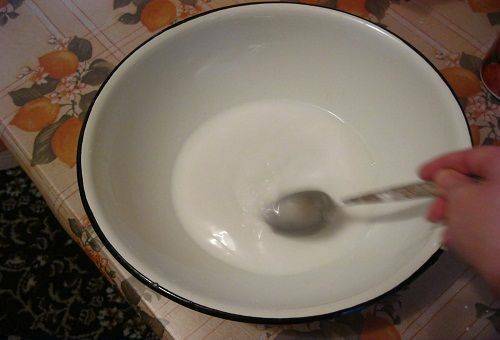Hand-woven articles of clothing and life require special care and treatment to keep the attraction constantly maintained. If you know how to starch a knitted product, you can count on the fact that it will be protected from external influence for a long time and will be able to please others.

The fashion for starching crocheted articles, whether it's a tablecloth, napkin, collar or an original souvenir, came back a few years ago. Today, such an approach to the processing of clothes and decor is no longer considered old fashioned, on the contrary, it gives out a skilful and experienced hostess.
The basics of starching things that every mistress of
should remember. Contrary to popular belief, not all things can be starched. Specific treatment is unacceptable when caring for items made of synthetic fabrics, black threads and underwear. In the latter case, this is forbidden due to the fact that such matter does not allow air to pass through, and this negatively affects the skin condition.

There are three degrees of stiffness of starched things that traditionally differ in the degree of density achieved, depending on the ratio of starch to the volume of fluid used. Despite this, these indicators can be achieved with the use of other tools at hand, only the methods will be different.
- Soft starch. A liter of water takes a tablespoon of starch. This processing allows you to give a more precise shape to blouses, shirts, dresses, handkerchiefs.
- Average starch. A liter of water is taken already a half tablespoons of starch. This density is considered optimal for tablecloths and tulle, crocheted, bed linen.
- Hard staining. A liter of water takes two tablespoons of starch. This solution is processed collar and cuffs for men's shirts, they can also be shaped like napkins for table setting, decorative items.
Tip: Beginners start a new unusual manipulation better gradually. Even the given dosages are very conditional and their fluctuations depend on the quality of the material. Everyone chooses for himself the optimum degree of rigidity, regulating the density of the active product.
Products that are used at home for manipulation of
At home, the following ingredients are used for the preparation of a starch composition:
- Starch. The traditional product, which is first diluted with a small amount of cool water, is then introduced into the boiling water with a thin trickle, stirring constantly. As a result, a clear composition should be obtained, which is cooled and used to soak the product. Next, the object should be slightly squeezed and shaped to the desired shape, if necessary, fixing the result with a hot iron. If you need to starch a snow-white collar, it is better to take rice starch, and for its breeding, milk will be more suitable.

- Sugar. For two glasses of sugar, take a glass of water, mix the ingredients and cook syrup from them over low heat. The product is soaked in the resulting composition, squeezed, dry areas, if necessary, further processed with a brush. Pressed object spread on the towel, straighten the crochet, fasten with pins, fixing the desired shape. After the product has dried, we estimate the achieved degree of rigidity and, if desired, repeat the procedure.
- Adhesive PVA.The main ingredient diluted with cold water in one or two times, which depends on the required rigidity. The item is either dropped into the resulting composition completely( if it is necessary to starch a snowflake, a removable knitted collar, a napkin), or spray it from a spray gun. This approach is most often used to handle small items, hats, details of carnival costumes.
- Milk of minimal fat content. Ideal for light and airy items that do not require severe stiffness. The product is usually used in pure form, but a small amount of starch is allowed.
- Gelatin. The quality replacement of starch, which unlike the traditional powder does not crumble and perfectly retains the shape of the product before washing. To handle things crocheted, you need to take a packet of food gelatin, a tablespoon of shallow salt and dilute them in half a glass of water. The resulting composition is placed in a volumetric container on a water bath and stirred until the ingredients are completely dissolved. Things we lower in a solution only after its full cooling, further we operate under the standard scheme.

To stain things crocheted, bed linens, souvenirs and other products did not cause problems, you need to remember a number of important points:
- If the put collar or a smooth cloth gets water, the procedure will have to be carried out from the very beginning.
- You can iron the finished product only after it has completely dried, otherwise it will turn yellow very quickly, and it will be impossible to clean the unpleasant shade.
- The linen to be starved should not be kept in a place with high humidity, this is fraught with the appearance of mold on the fabric.
- It is recommended to starch things with sugar in the cool season. In summer they will attract the attention of insects.
- If the crocheted thing, hat or collar was literally standing, then even before drying, they should be placed on a suitable frame.

You also need to look after the starched object correctly. If, for example, the fringing on the tablecloth was glued during the processing, it should be held for a few minutes over the steam and carefully spread out with your fingers. If the starched product sticks to the sole of the iron, then the next time the solution is better to cook not on water, but on low-fat milk.



